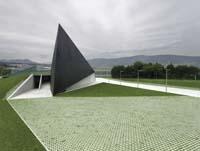New museums for new social challenges

We are immersed in the technological age of the smallest, the robotic, the biotechnological, the digital, the electronic. Today it is built on a nano scale, customized medicines are designed, tiny electronic equipment is manufactured with capacity that we do not imagine, food is functional...; the most cutting-edge technologies are also part of our day to day and have changed our vision of life: quality, duration, stages of life, impact, possibilities of relationship, leisure, sensations and emotions, amount of information, accessibility, capacity of action...
In most countries in our environment, research, development and innovation (R&D&i) have been considered as engines of the economy and have opted for them.
On the other hand, it is undeniable that we are increasingly aware that environmental problems require immediate responses, the rate of exploitation of the planet is so high. The differences are increasing on the planet. At this point, the answers cannot be only local, but we need to become aware of the dimension of the planet, of globality.
The development of science and technology offers hope, but not everything is accepted blindly. We know how to measure risk and we must take advantage of opportunities, but we must provide and demand data to make the decisions we consider most appropriate. We have new opportunities, but also new challenges. Challenges facing science and technology museums. We will or will not be knowledge.
New demands for the expansion of R&D&i
From the hand of Oppenheimer came the biggest revolution in changing the model of science museums, in 1969, with the first center of the Hands on era: Exploratorium of San Francisco. In that center, interacting with them, the visitor was aware of scientific concepts through easy, attractive and spectacular modules for use, experimentation and curiosity. This model quickly spread to everyone, sometimes successfully, others did not. And its evolution has given rise to the models Minds on and Hearts on. The latter seek to generate questions and thrill so that visitors can create curiosity and learn more.
The science taught in the Oppenheimer era was discovered 50 years earlier. Today, in the era of constantly changing technology, more interesting than seeing the latest innovations (which are necessarily obsolete to reach the showcase) is to address future trends; see what are the uses of new advances and what they can be; their consequences. In addition, we want to know the protagonists. Know that very close to our homes, in our research centers, people with first and last names are making local contributions that impact globally.
New museum strategy, more reality
At present, one of the main concerns of many science museums is to know how to show the R&D&i that takes place in the environment. This trend is the central focus of many of the innovations that museums of Natural Sciences have made. Collections warehouses, laboratories, research groups have been exposed, but not only through guided tours, but have become part of the museum's exhibition, conduct research directly. With this objective we are working in recent years and we have begun to see some results. The Natural History Museum in London has opened a new hillside dedicated to the research exhibition, the Darwin Center; and the California Academy of Science in San Francisco has a new building with spaces dedicated to research and researchers working on it. Research, development and innovation are not done alone or remotely and unconsciously, they need people, budgets and projects.
Our strategy: BTEK model
To meet these requirements, BTEK, the first technology interpretation centre to be built in Euskal Herria, was born. ESO's second-cycle students will be the center's main visitors, so BTEK's goals will be to foster the culture of technology and innovation among young people, as well as to awaken vocations, curiosities and critical spirit. In this way, this center will serve as a bridge between society and the Bizkaia Technological Park -- between society and its companies and research centers -- and will be closely related to the science and technology that is developed in the Bizkaia Technological Park. BTEK will be in reality and with reality.
BTEK has been committed from the beginning to create its own innovative project. The project developed by the Elhuyar Foundation will feature excellent scenography, a large number of interactive 3D solutions, mechanical and electronic components, augmented reality, image processing and gesture-based technologies, with a special impact on accessibility through creativity and design.
The visitor will approach technology from everyday use, not from the scientific concept. And that the visit to the center is an exciting, imaginative and motivating experience. Therefore, the museum has been worked from a playful and rational perspective and not just didactic. Visibility and appeal will be the key to capturing the visitor.
The BTEK center is committed to providing a quality experience to understand the system itself and its challenges, and to promoting the values of sustainability through all its contents, involving current agents to find the future protagonists.







